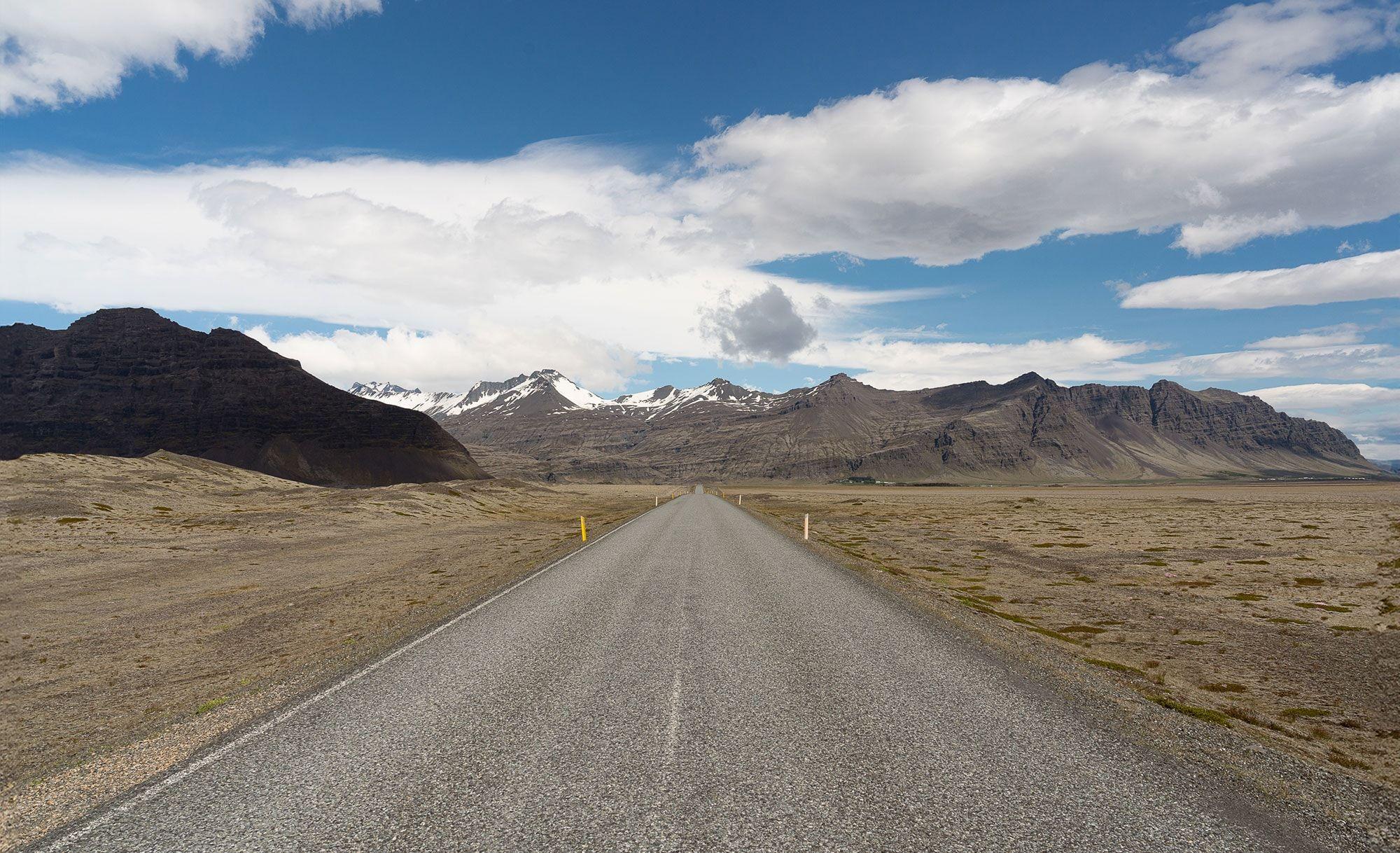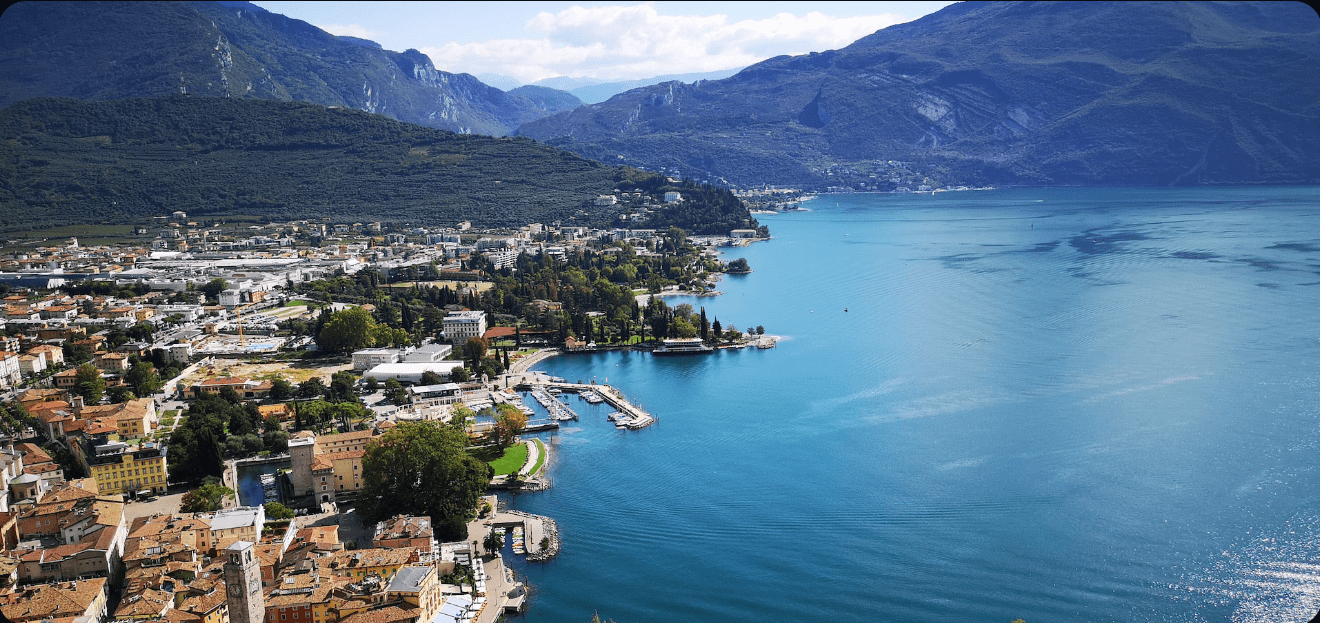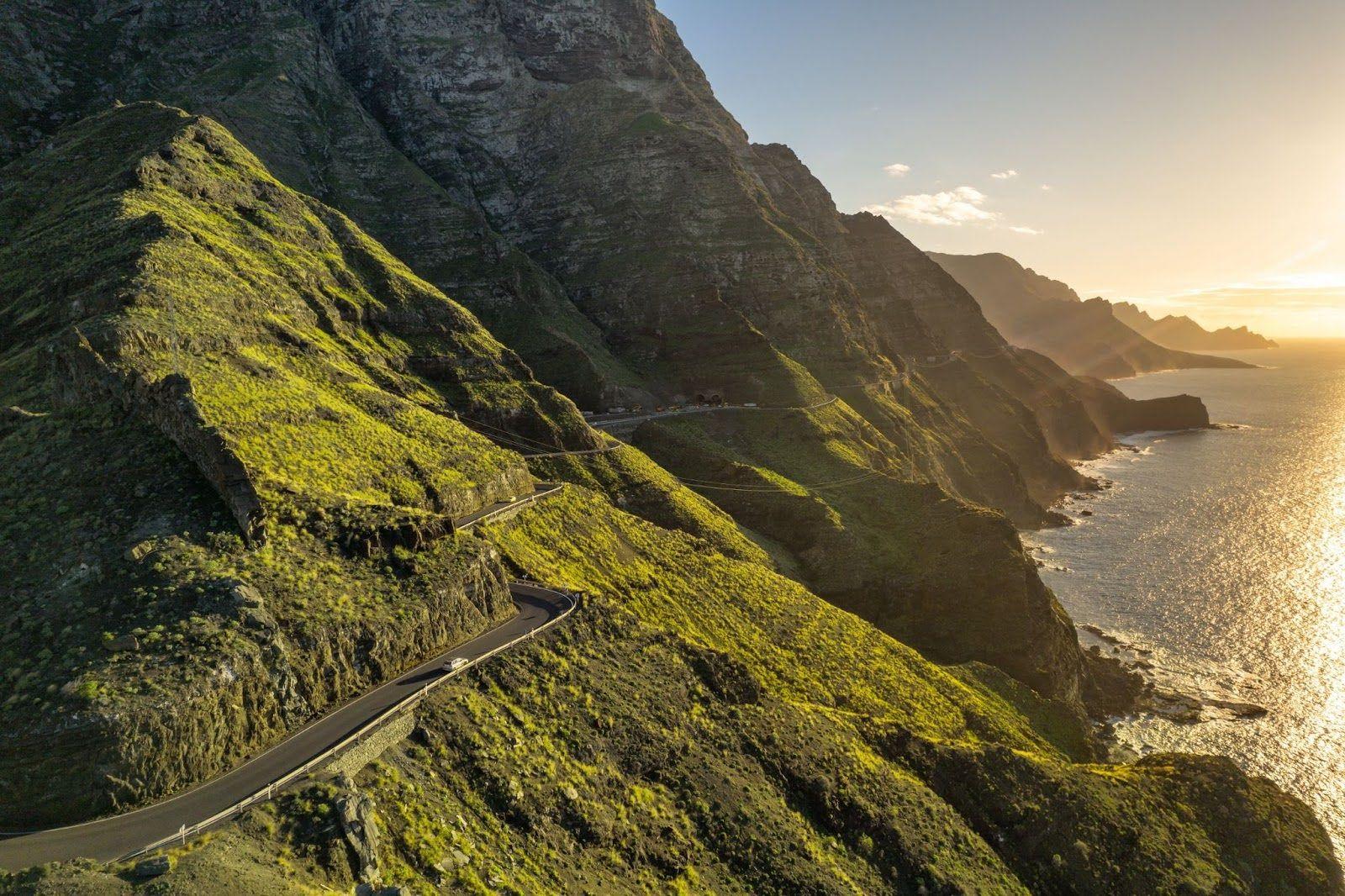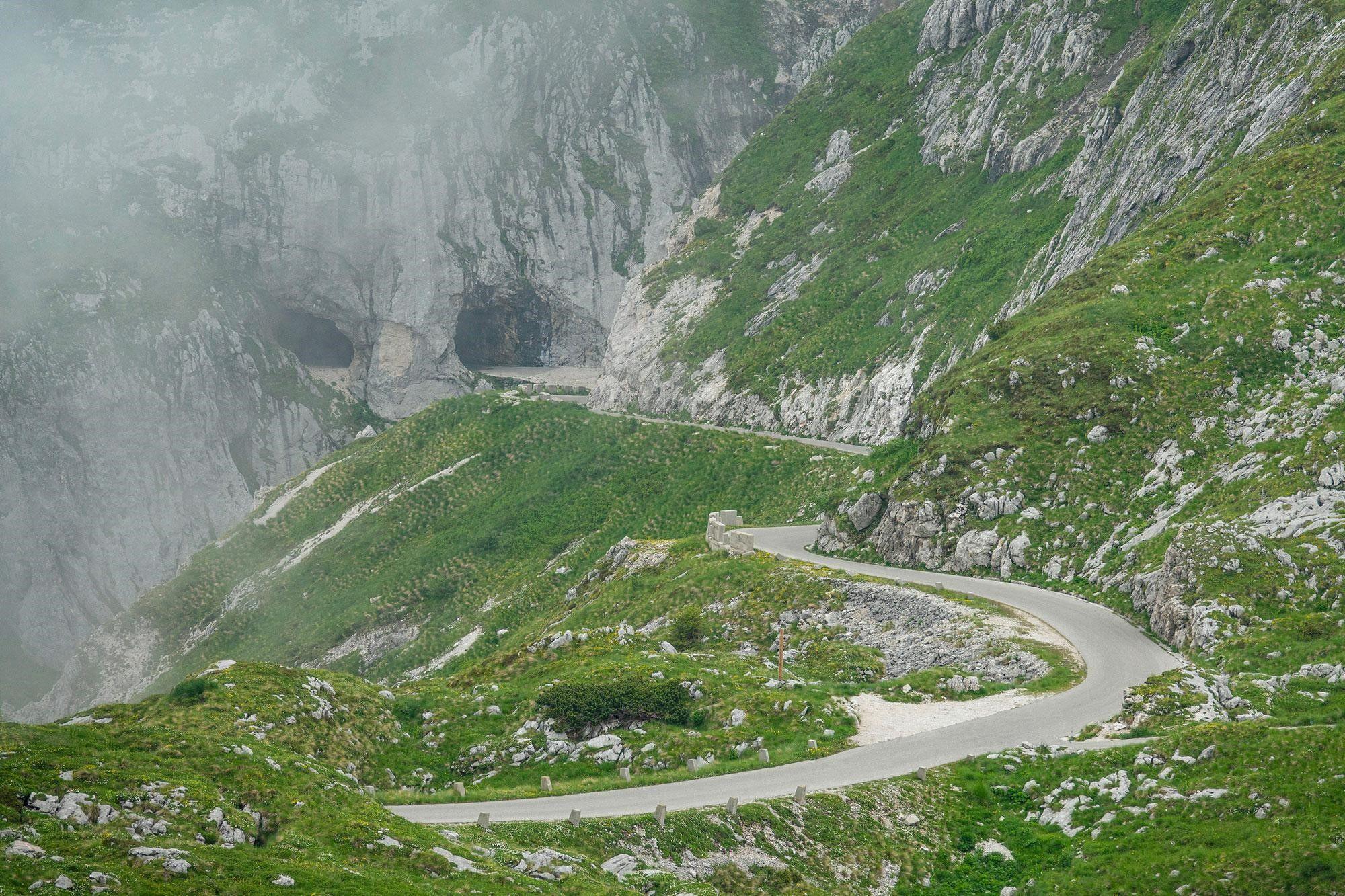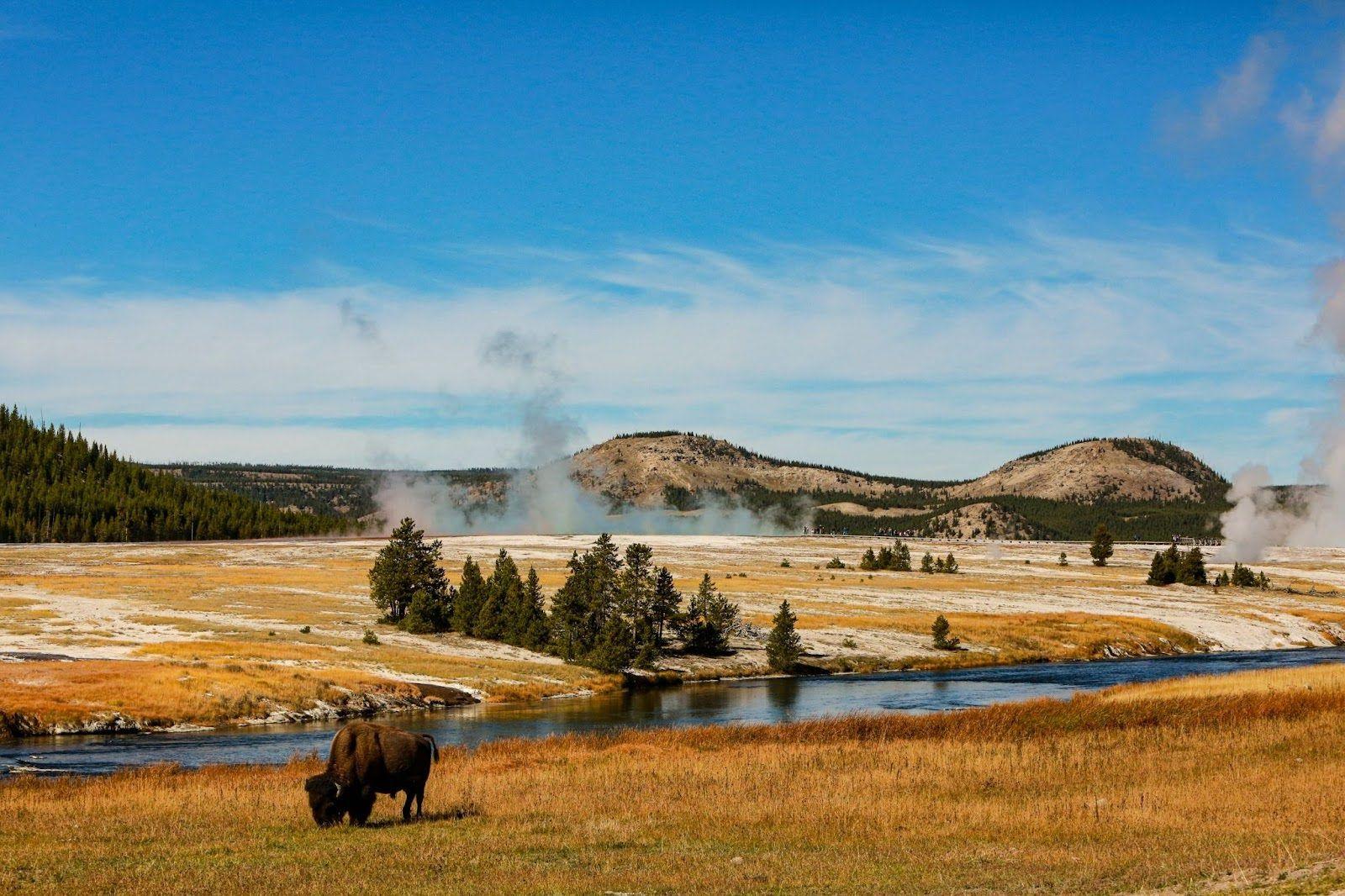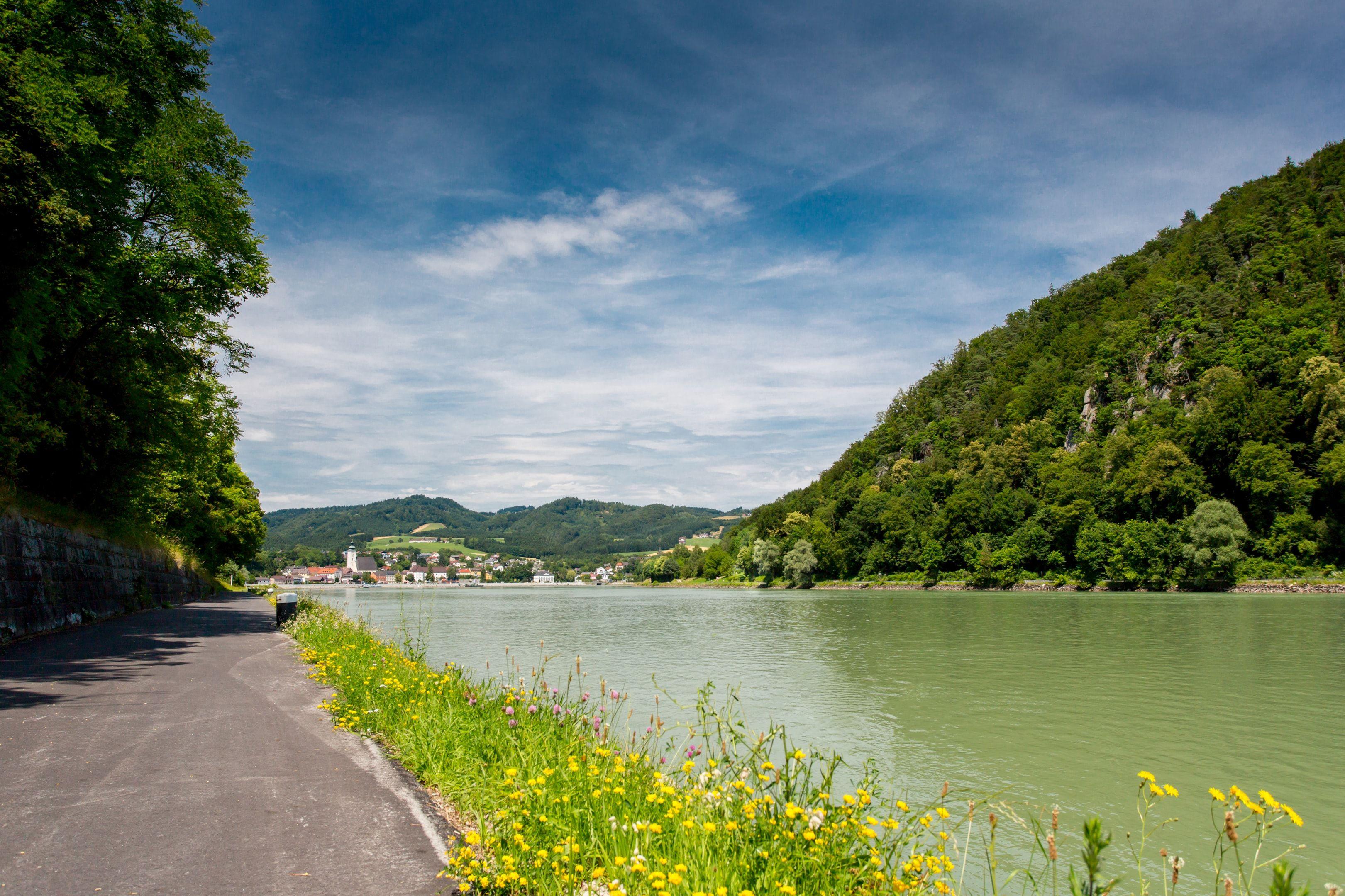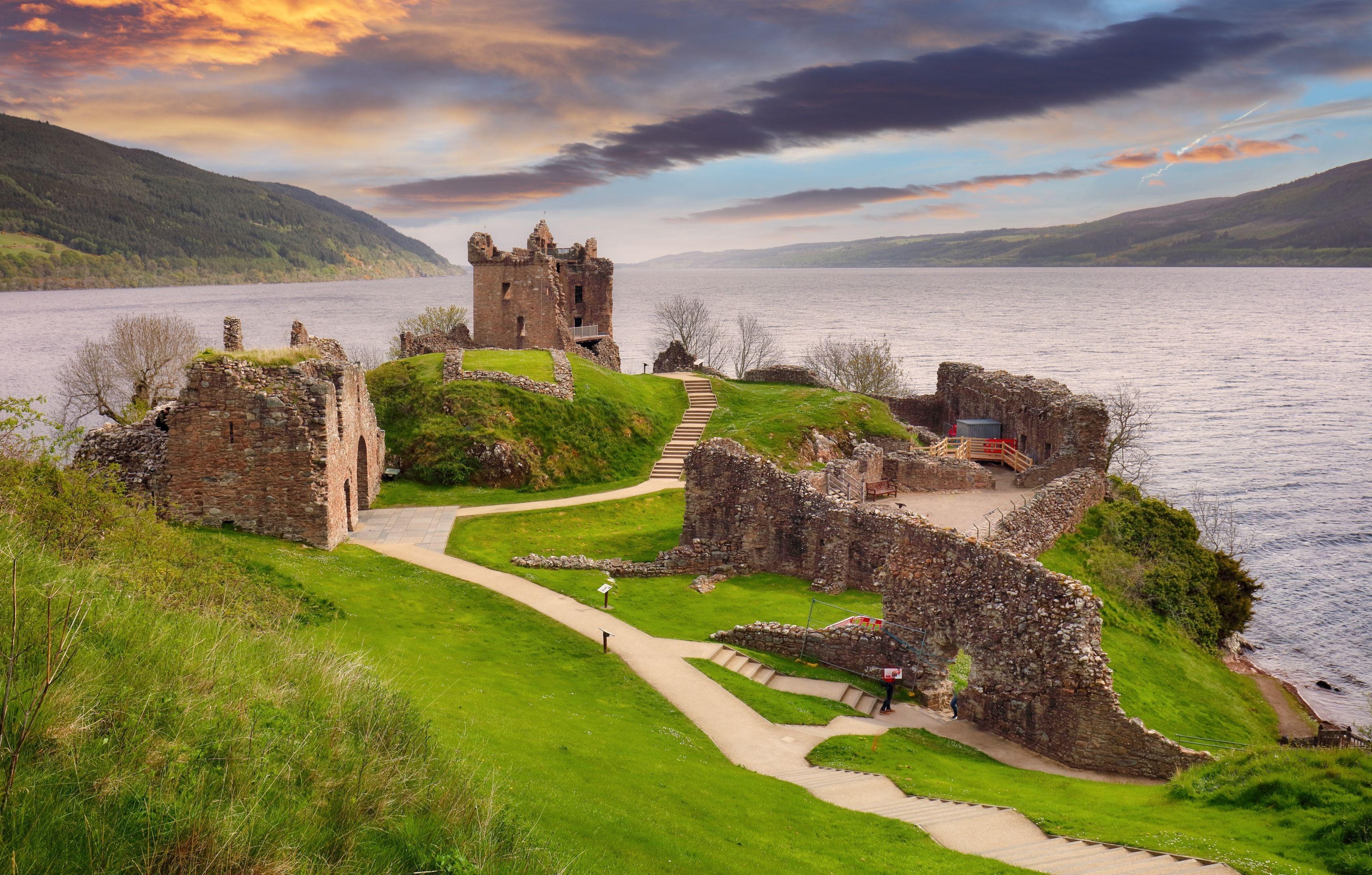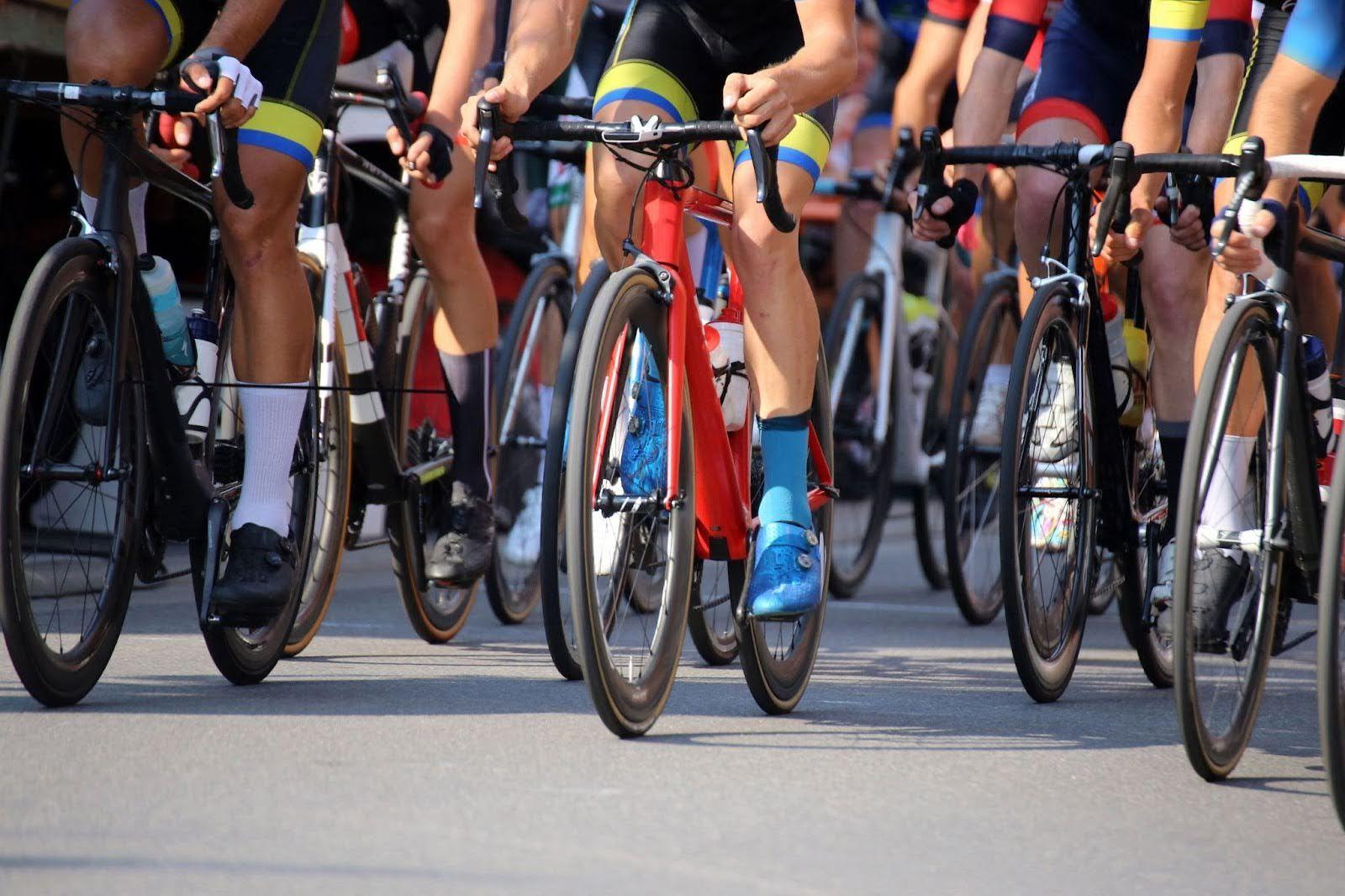What Makes a Ride Bucket-List Worthy?
The best bucket-list cycling adventures combine beauty, challenge, and just the correct dose of bragging rights. These are the climbs that push your limits, take you deep into wild landscapes, and leave you with memorable cycling journeys and experiences.
And it's not just outdoor cyclists dreaming of these goals. Indoors on ROUVY, you can tackle the world's most iconic climbs and other cycling challenges from home on your trainer or smart bike.
A bucket-list ride might be defined by its fame, such as a renowned climb on a stage of the Tour de France. Or it might mean something on a personal level: a mountain you've dreamed of conquering, a place tied to your past, or an unforgettable moment shared with fellow riders or a loved one. In truth, the best climbs can even combine all of these. They're steeped in myth, surrounded by nature, and the summits are reached through sweat, focus and grit.
An Inspiring and Definitive Guide to A Cyclist's Bucket List
I still remember the first time I dreamed of climbing Alpe d'Huez and other epic climbs in the Tour and the Giro. Watching the Tours on TV, I saw the riders suffer, and I imagined myself doing the same challenge, ascending each switchback, counting them down till the top. Years later, I found myself doing just that on ROUVY and making it a real goal on my travels. Perhaps I can spark ideas for your bucket list.
I've been fortunate enough to ride many of these challenging routes, including several of the top rides listed here. These physical, mental, and emotional experiences surrounding my personal goals kept me motivated and inspired during my cycling travels.
The photos I've taken from these rides will be sprinkled throughout this post, offering glimpses of the beautiful scenery and magnitude of each challenge that make each one unforgettable. I will also include a few practical and helpful tips that I have gained.
Whether you're chasing these roads outdoors or virtually on ROUVY, this list is for every avid and passionate rider who has ever stared at an iconic climb wishlist and thought: That one's for my bucket list!
Top Bucket List Climbs and Cycling Challenges to Conquer
Passo Stelvio (Italy)
A Giro d'Italia legend, the Stelvio rises to 2,757 m in the Lombardy Alps. It's known for its dramatic switchbacks—48 from Prato, 40 from Bormio—and a must-do climb. Stelvio is a must-do iconic climb on your list, from both sides. If you're able to do it, consider completing the Stelvio loop that goes via Val Mustair while you are in Switzerland, where you can take a pit stop. Try to leave at sunrise or on an organised traffic-free day. The asphalt is in good condition on both sides as well as down the newly paved Umbrail Pass.
On the prettier Prato side, don't miss the opportunity to take the cycle path in the first few kilometres alongside the river and to refill your bottles at the Fontus well further up. The passes also get very busy on both sides from around 9 am already, so the earlier you start, the better! Riding it on ROUVY offers you the serene and peaceful car-free version!

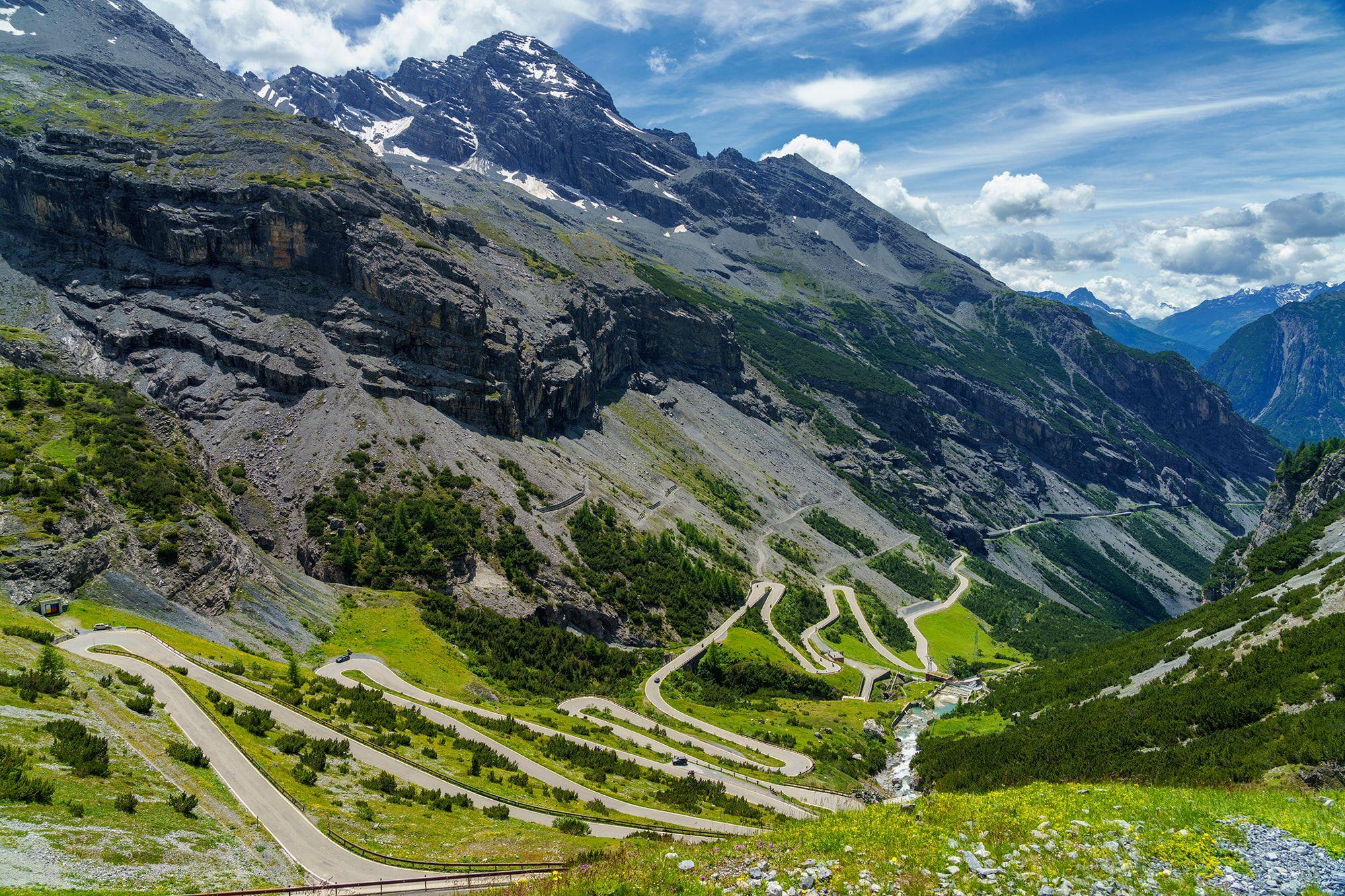
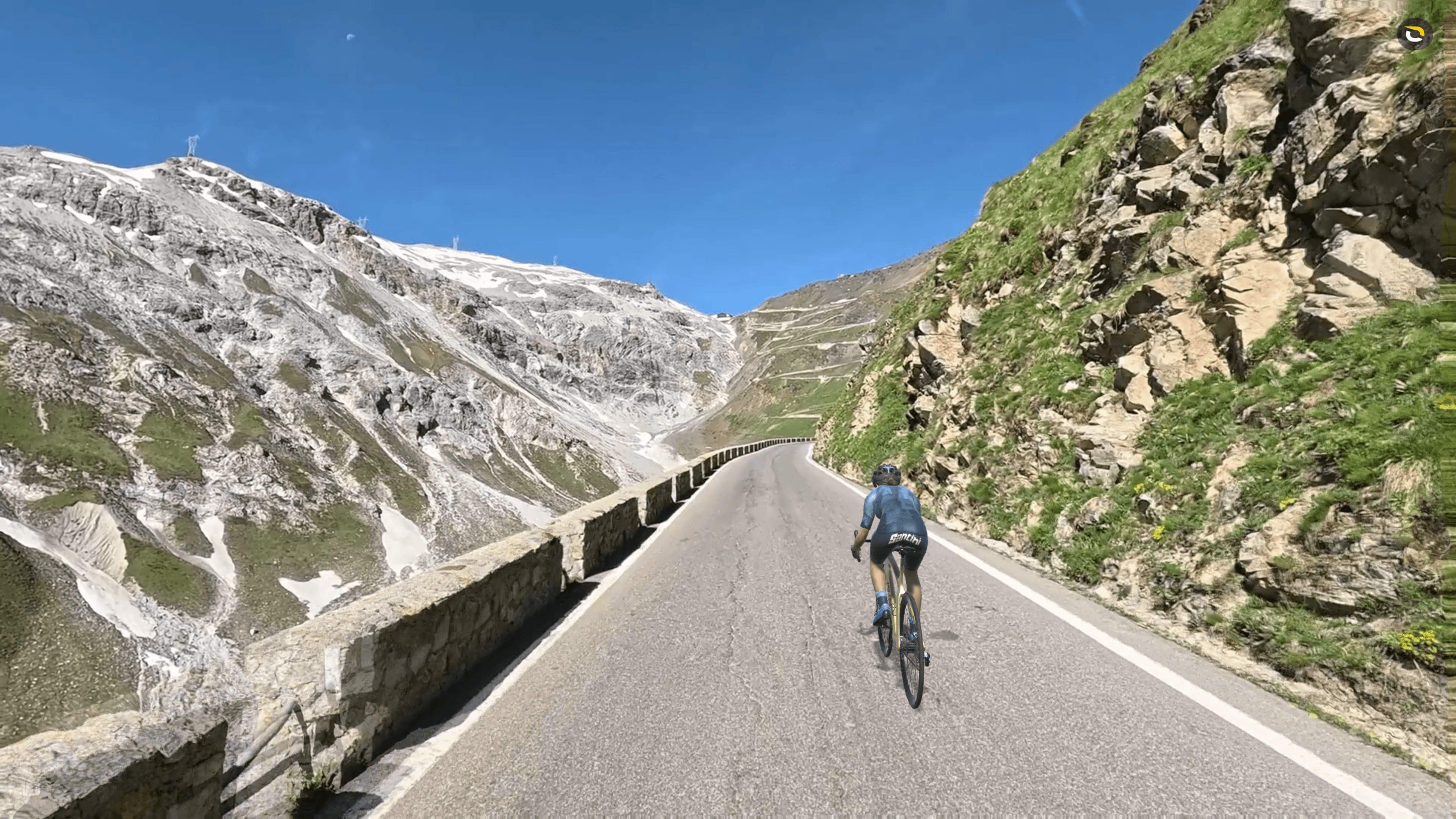
Passo Gavia (Italy)
Also in Lombardy, the Gavia climb from Bormio via Catarina Valfurva reaches an elevation of 2,621m. It is a peaceful and beautiful climb. Less busy compared to the Stelvio. The ascent from the Bormio side is not very long, and the condition of the asphalt is good; however, the gradients are uneven, making it challenging to maintain a steady rhythm. The scenery all the way is absolutely stunning, and the lake views near the summit are the cherry on top! There is a pleasant café at the summit called Rifugio Bonetta, where you can refuel.
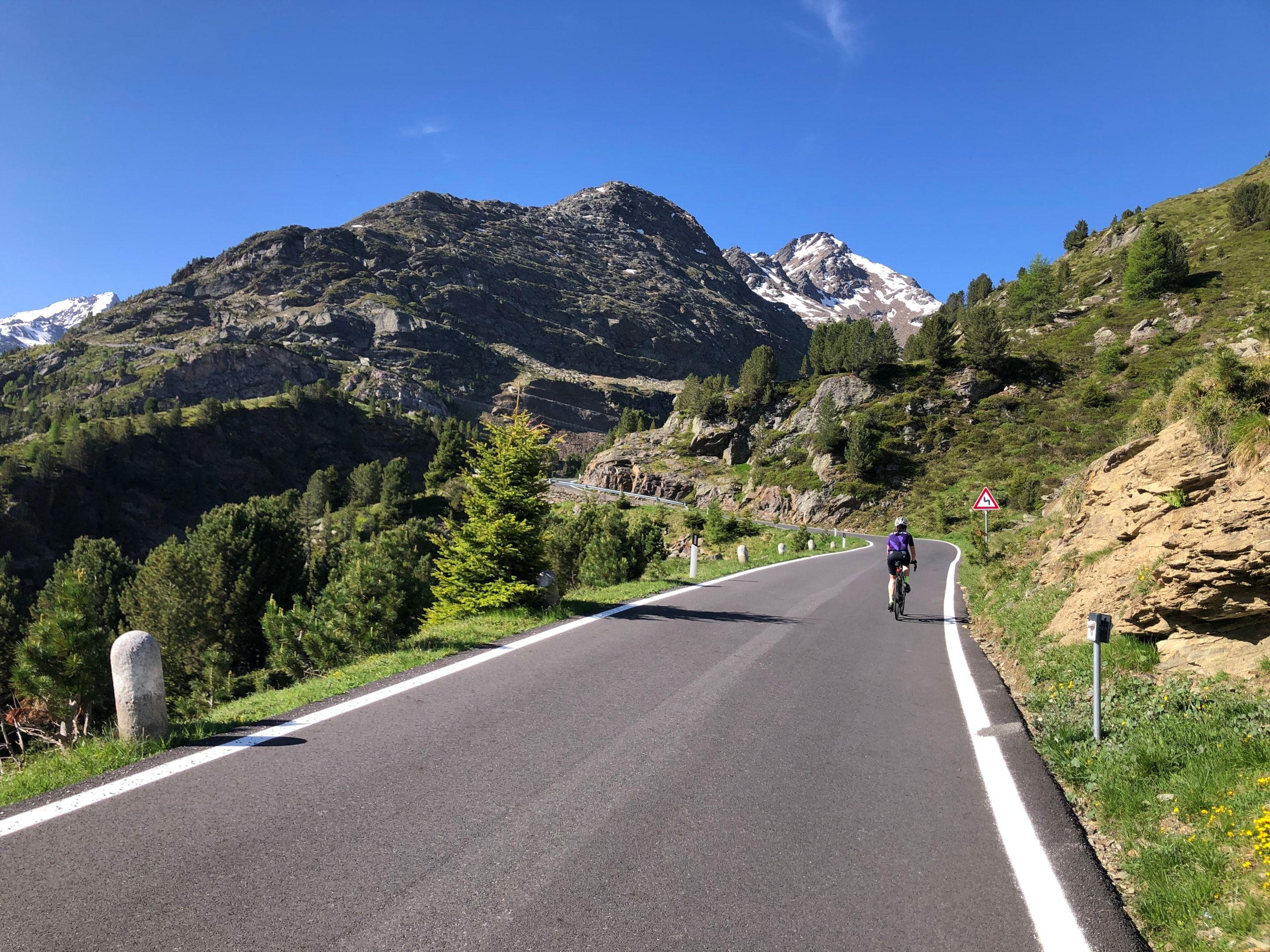

Mortirolo Pass (Italy)
The Passo Mortirolo, starting from Mazzo, is a brutally steep and unrelenting climb. One can also climb it from Monno or Grosio. The ascent from Mazzo is legendary in the Giro. With gradients that reach double digits and few places to recover, it is one of the most challenging climbs I have ever done. The Passo Mortirolo is one of the most difficult cycling climbs in the world. It's approximately 11.5 km and averages nearly 11% to the 1,852m summit, with a maximum gradient of 18%. Grab the opportunity to stop and take a photo at the Pantani monument on one of the hairpins on the way up, where you'll find one of the very few flatter sections with a slight relaxation of the gradient.
Monte Zoncolan (Italy)
Zoncolan, situated in the Udine region of the Carnic Alps in Friuli Venezia Giulia, near the borders of Austria and Slovenia, is a whole other level of uphill riding. Over 10.5 km at an average grade of 11.5%, with ramps reaching 20%. Little relief, no mercy, and I can say that every word of that description is accurate! Ensure you have at least a 34T or, ideally, a 36T, and expect a high heart rate with no flat places to recover. I thought it was tougher than the Mortirolo. If possible, try riding the Mangart, which is located just over the border in Slovenia. As Mike Cotty said after riding it: "You're questioning your sanity the whole way up…". Indeed!
Col du Télégraphe & Col du Galibier (France)
Another two-part alpine epic cycling challenge at 2,642m elevation: use the Télégraphe's forested 12 km as a warmup, then tackle the Galibier—one of the Tour's highest and longest climbs with wildlife sightings, expansive views, and Tour history under your wheels. Combine both for a nearly 35 km climbing day that will form special memories of the sheer grandness of this mountain forever. My tip for this climb is to stop at Volloire for a coffee break, fill up bottles at the tap and take some photos before tackling the Galibier.
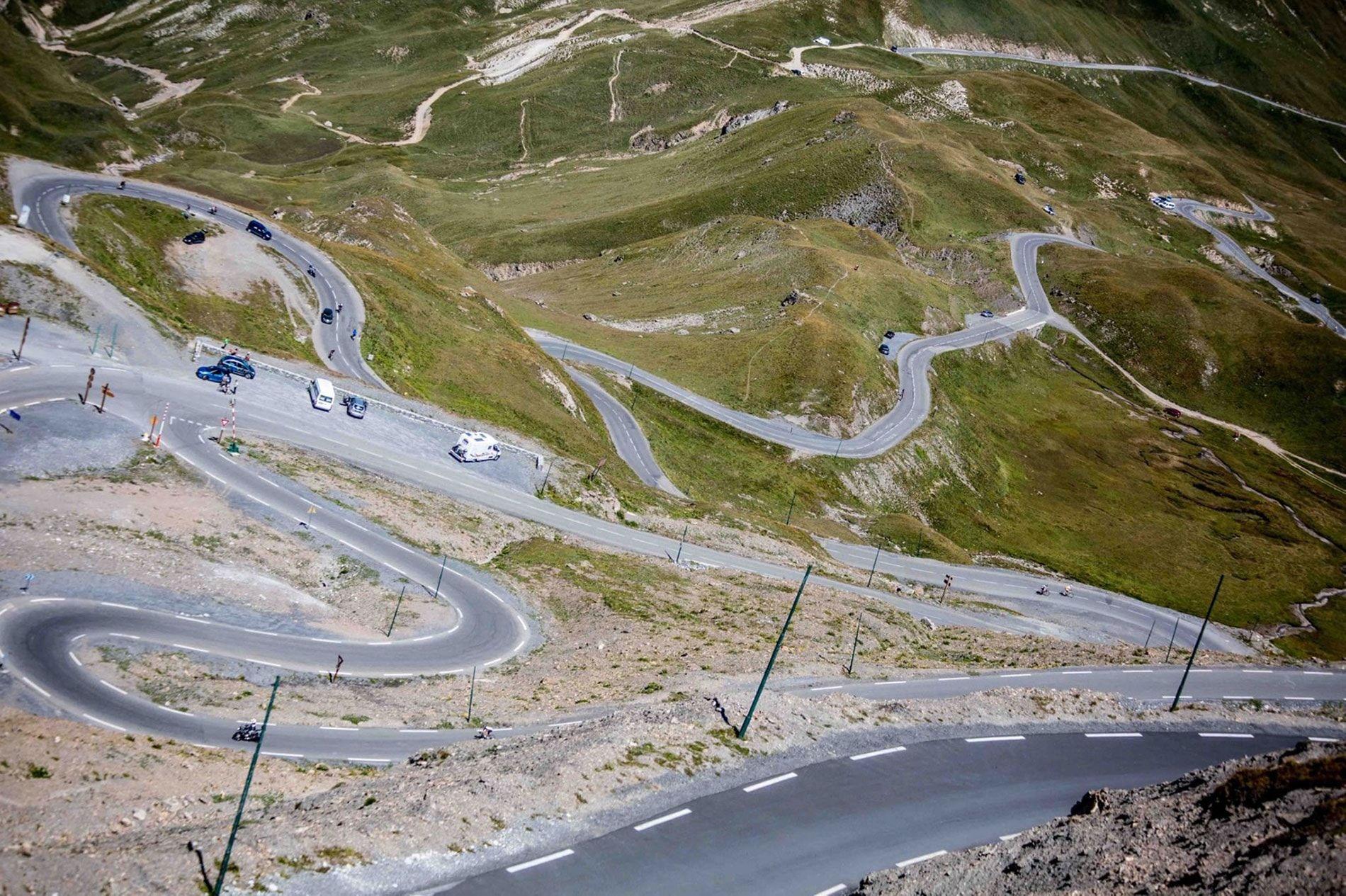
Mont Ventoux (France)
Mont Ventoux, known as the "Bald Mountain," is one of cycling's most iconic and unforgiving climbs, renowned for its rich history and legends of triumph and tragedy in the Tour de France. Rising nearly 2,000 metres above the Rhône Valley, with its upper slopes having their characteristic limestone moonscape. The mountain's harsh, changeable weather has earned it the nickname "the killer."
There are three main ways to tackle Ventoux:
- Bédoin - the classic, most famous side
- Malaucène - the shortest and often steepest approach
- Sault – a longer, gentler, and less crowded option
Each route offers its unique perspective, but once you are there, try to do both sides back-to-back from Bédoin and Malaucène. Some riders have managed to complete all three sides on the same day, earning a place in the prestigious "Club des Cinglés du Mont Ventoux" (The Madmen of Mont Ventoux Club). The Cinglés route covers approximately 137 kilometres, featuring over 4,400 metres of elevation gain.
Olympic champion Marty Nothstein once called his first ascent of Mont Ventoux "a lifelong companion in the mind."
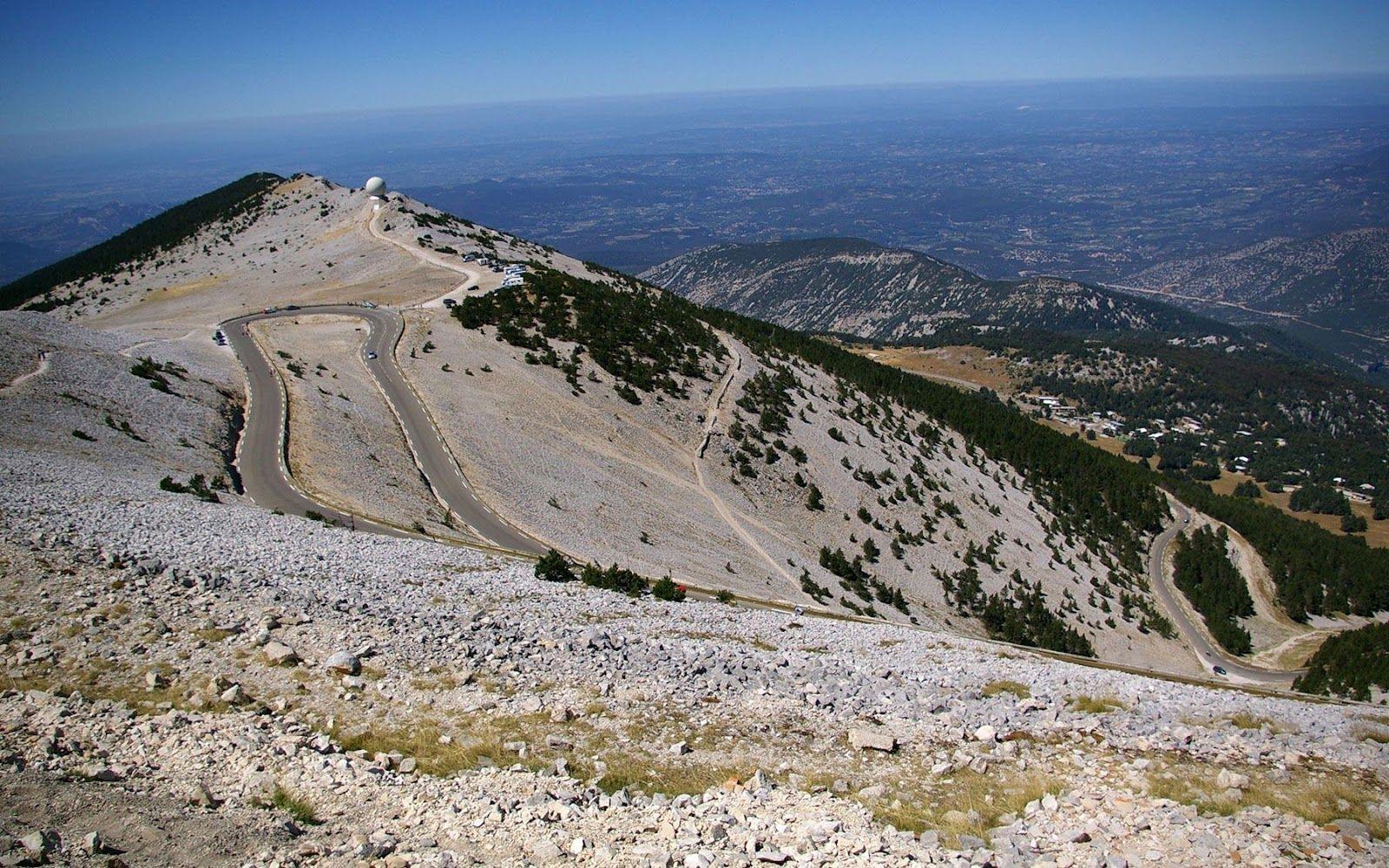
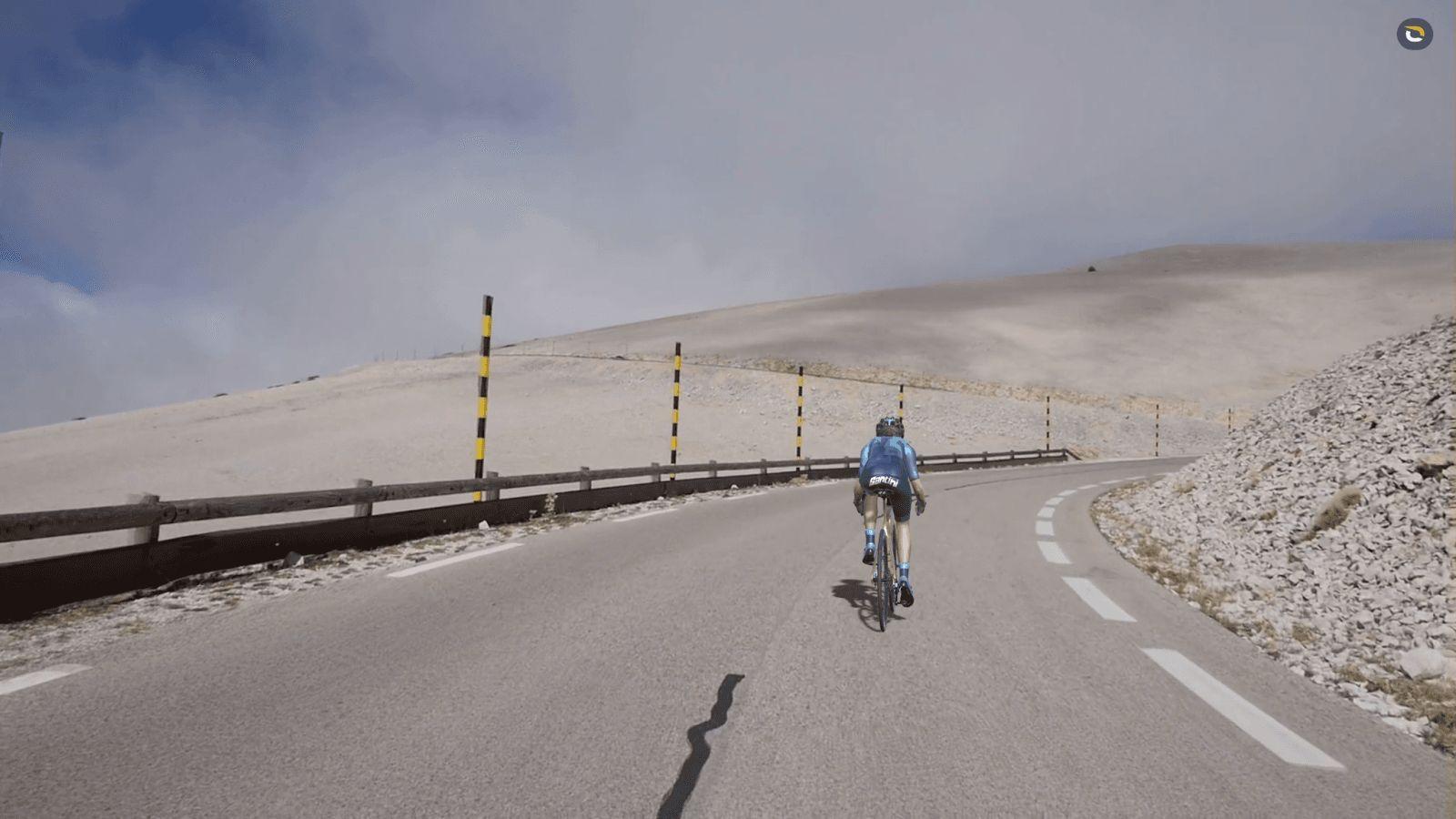
Alpe d'Huez (France)
Alpe d'Huez is a classic of the French Alps and a renowned icon of the Tour. Starting in Le Bourg d'Oisans, this legendary ascent features 21 numbered hairpins on a climb that stretches approximately 13.8 kilometres with an average gradient of 8.1%, demanding focus and stamina due to its constantly challenging gradients.
My tip is to take it really steady in the first 5 km, where the gradients are really steep, before settling into a rhythm. The corners are not as steep, allowing you to pedal with less force and drop your heart rate.
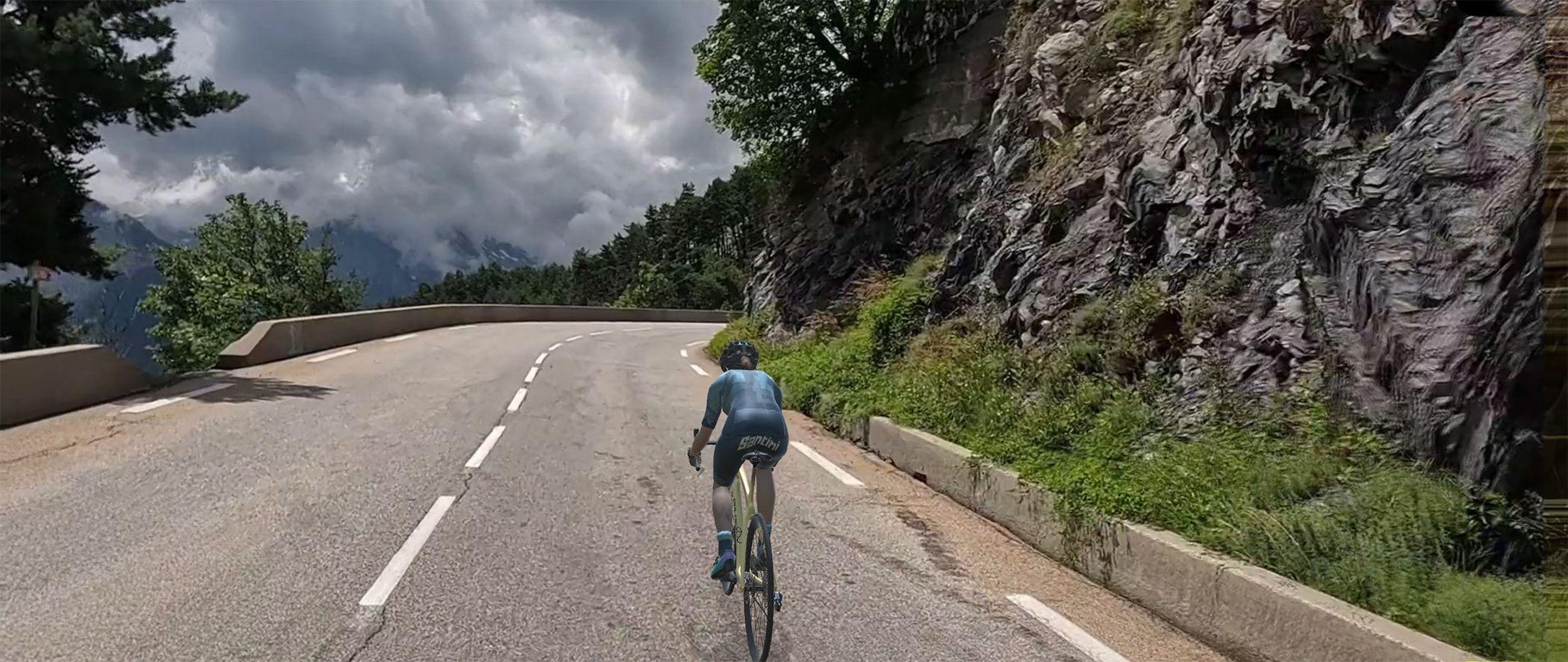
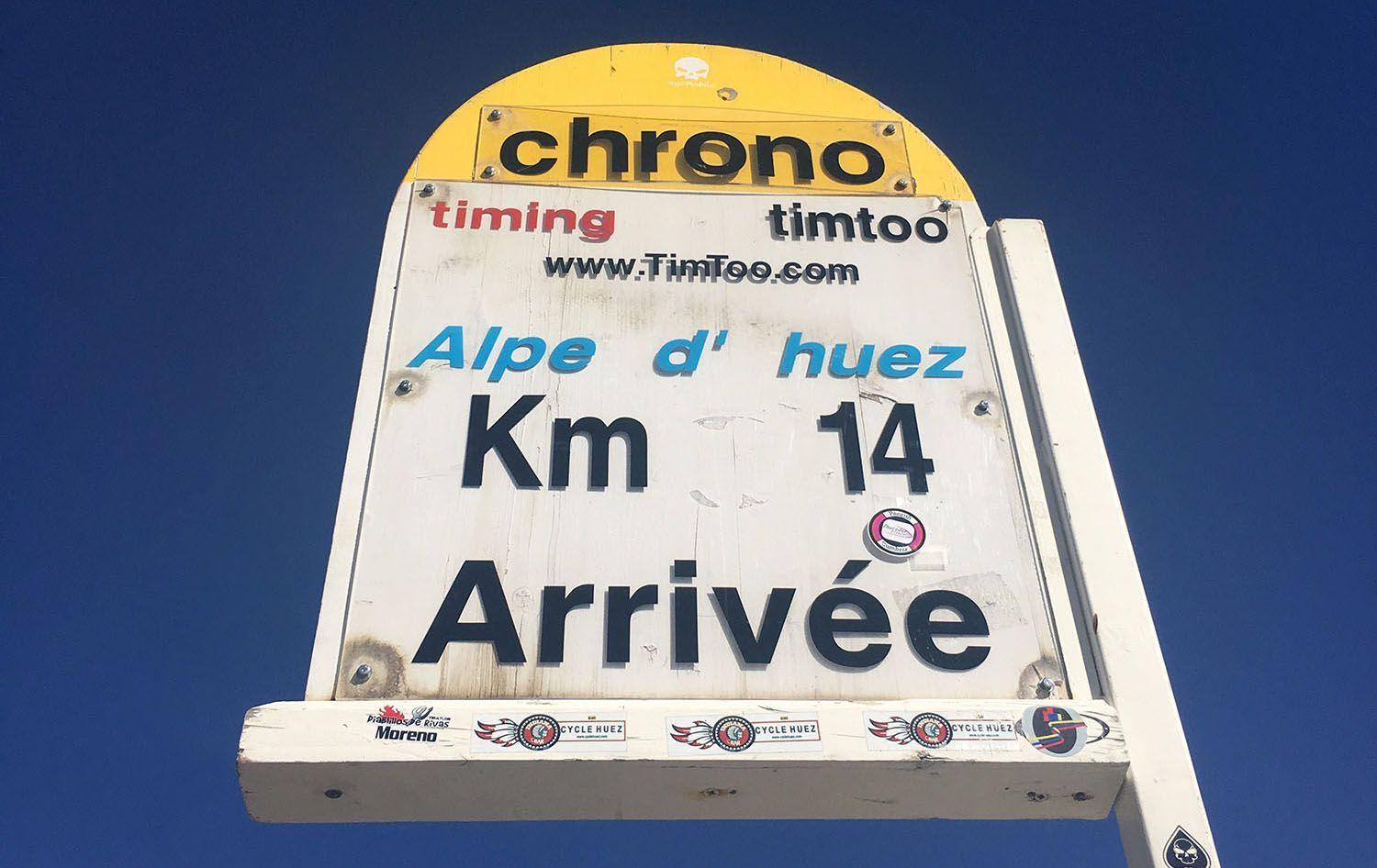
Col du Tourmalet (France)
The Col du Tourmalet is the highest paved mountain pass in the French Pyrenees, reaching an elevation of 2,115 metres. It has become synonymous with the Tour, having witnessed countless historic moments that cement its status on every cyclist's bucket list and featuring in more editions than any other climb in the race. Starting from the town of Sainte-Marie-de-Campan or Luz-Saint-Sauveur, cyclists face gradients averaging around 7.3% over 17.2 kilometres. The road twists and turns through rugged terrain, with panoramic views that reward every hard pedal stroke.
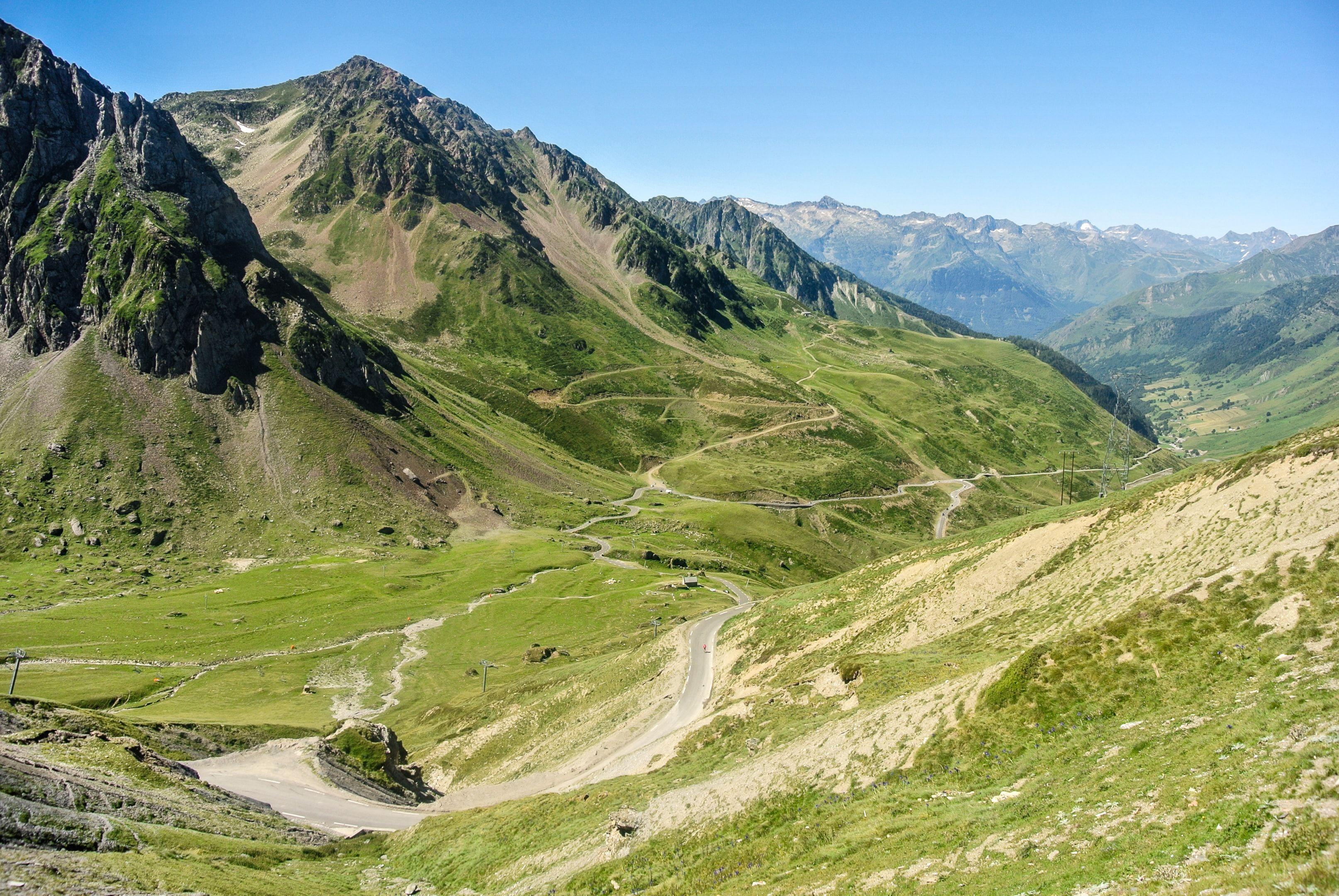
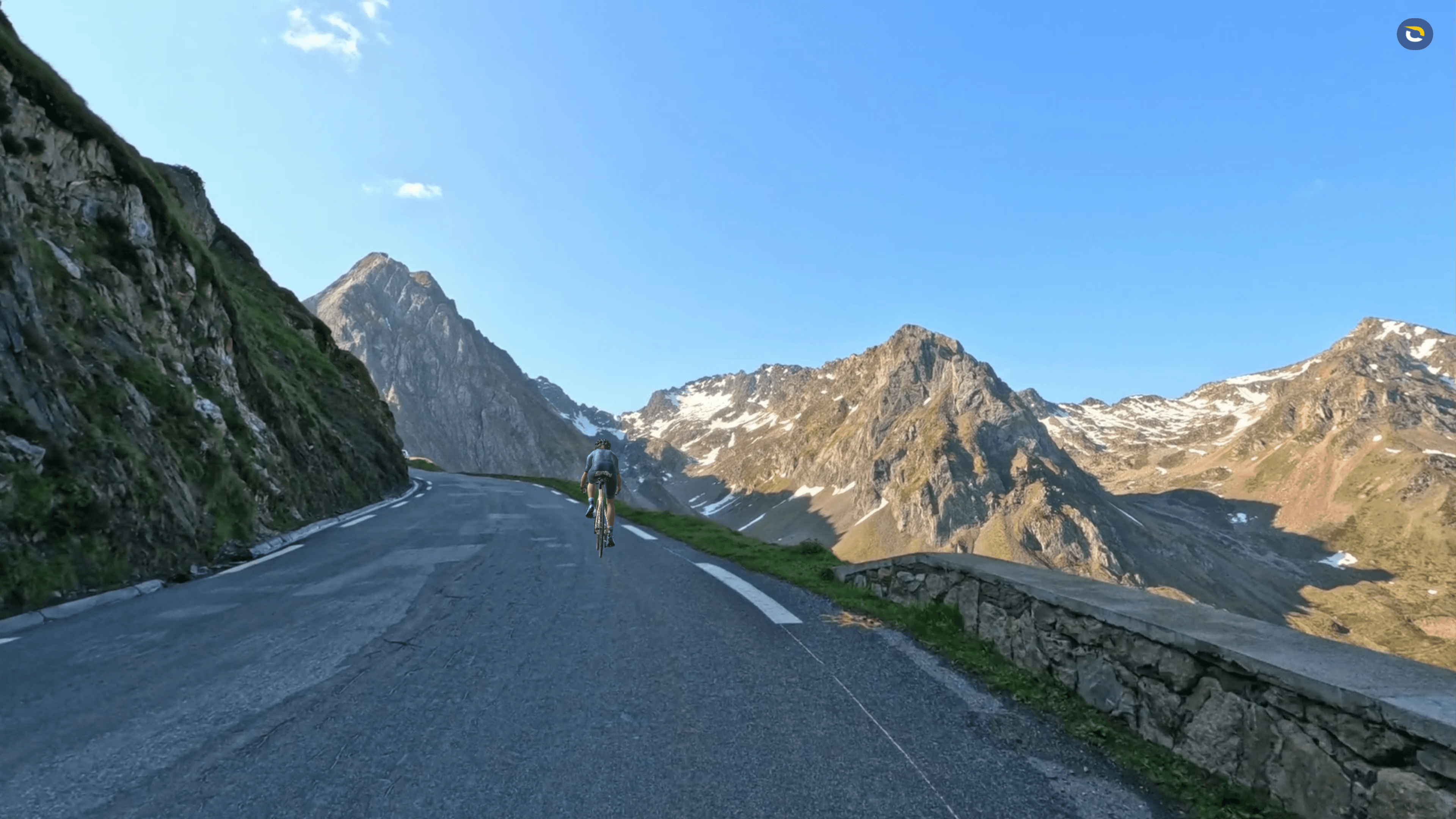
Colle delle Finestre (Italy)
My memories of this exceptional gravel climb will last a lifetime! Situated in the Piedmont region of northwestern Italy, the Colle delle Finestre is renowned for its appearance in the Giro d'Italia. Starting in the town of Susa, the climb covers over 18.6 km with an average gradient of 9.1%, reaching a height of 2,178 m. What makes it truly unique is the final 8 km—an unpaved gravel section that adds an extra challenge, magnificent views, and character to the climb.
If you decide to tackle it on a road bike like the pros do in the Giro, I'd advise using wider tyres (28mm or 30mm) for better comfort and traction on stones, sand, and gravel than, say, 25mm, although it was doable. However, gravel and mountain bikes are equally suitable, offering more stability on loose surfaces without compromising climbing ability.
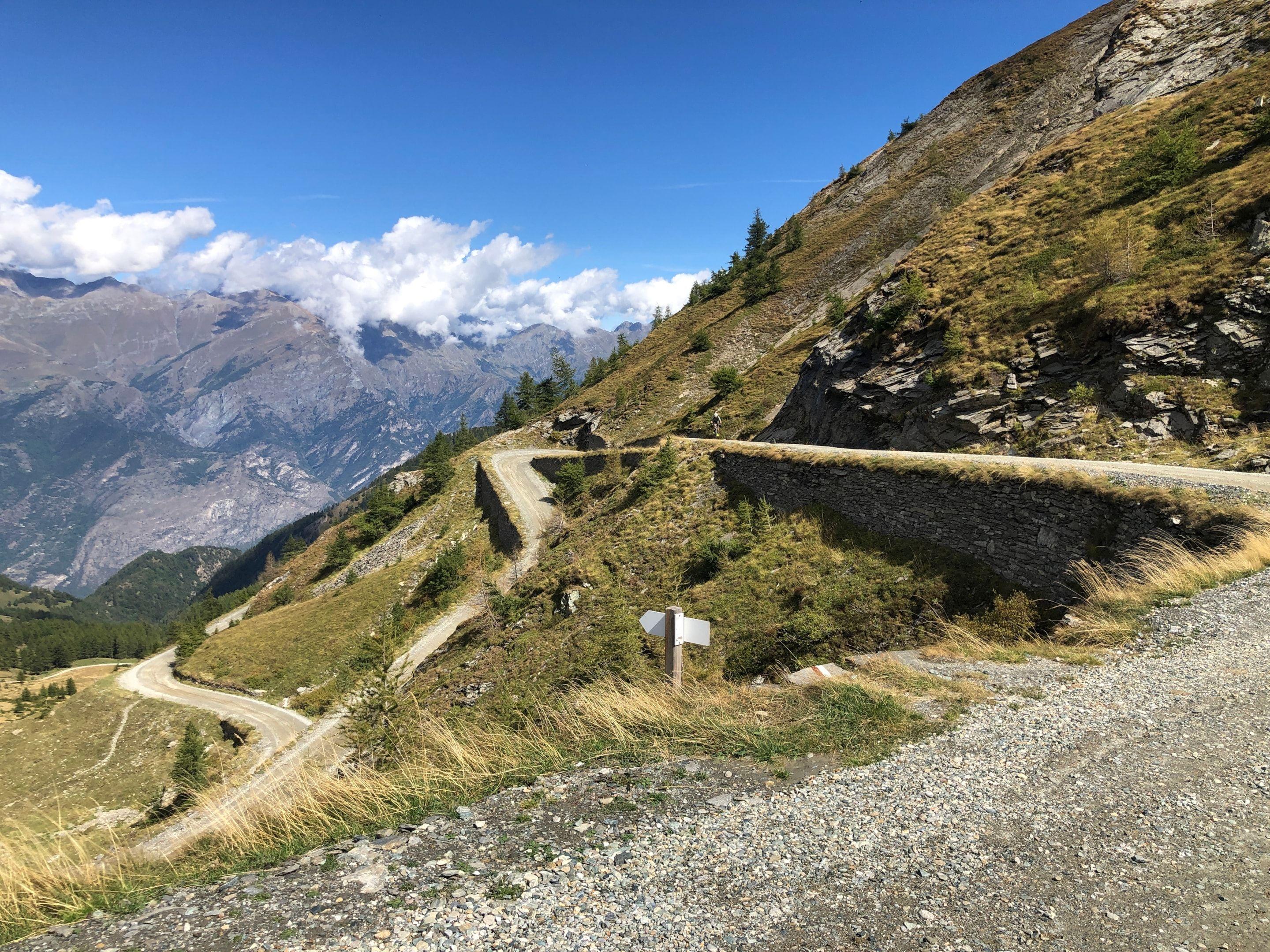
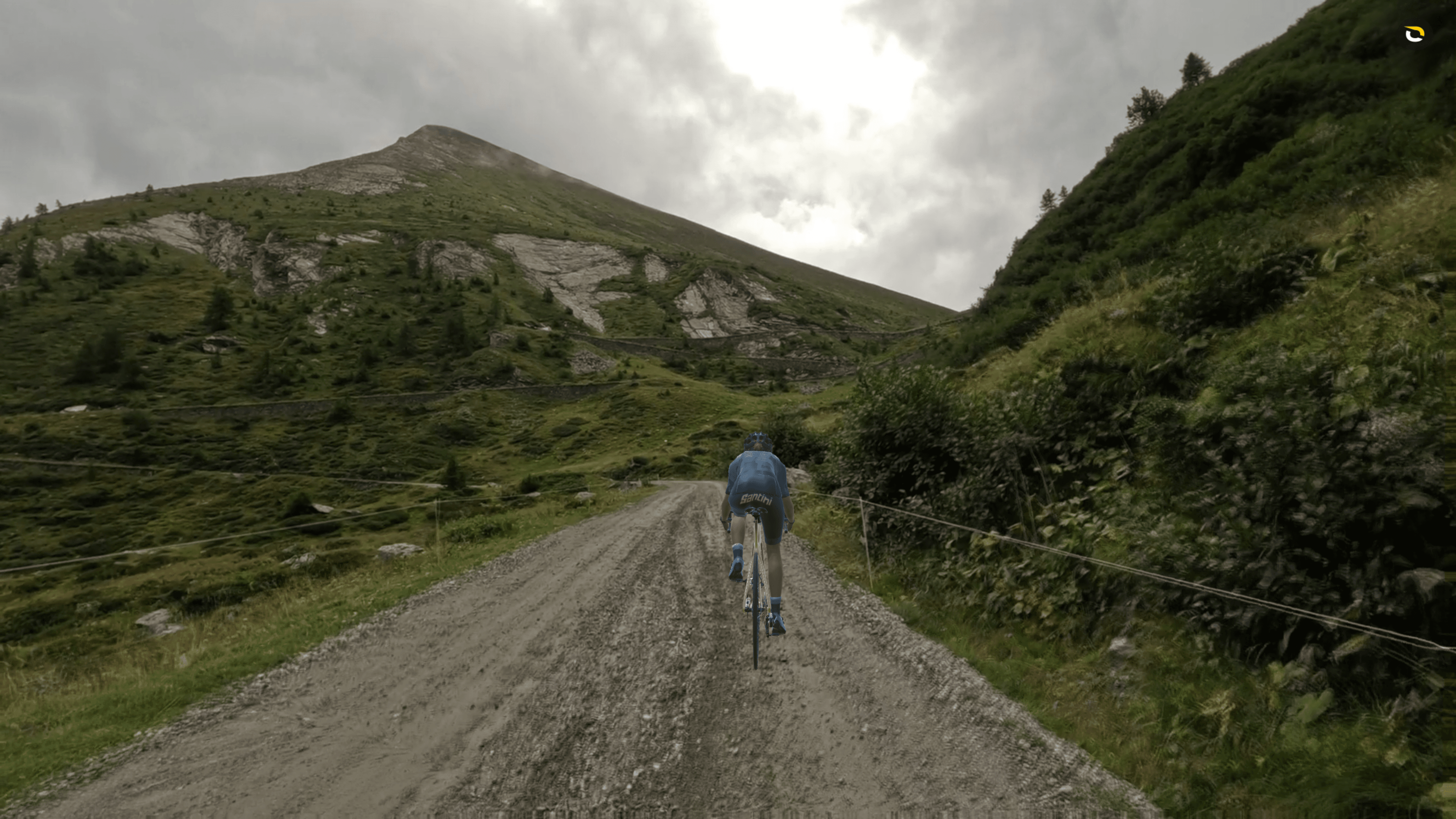
Sella Ronda (Italy)
Nestled in the Dolomites of northern Italy, the Sella Ronda is not just one climb, but a beautiful and highly popular circuit that includes four legendary passes: the Passo Gardena, Passo Sella, Passo Pordoi, and Passo Campolongo. The loop is approximately 55 km long, featuring over 1,700m of climbing, and can be ridden in either a clockwise or counterclockwise direction.
Each pass offers stunning views of the rugged Dolomitic limestone formations and Alpine meadows. While not as brutally steep as some individual climbs, the cumulative elevation and beauty make it one of the most unforgettable rides in the world.
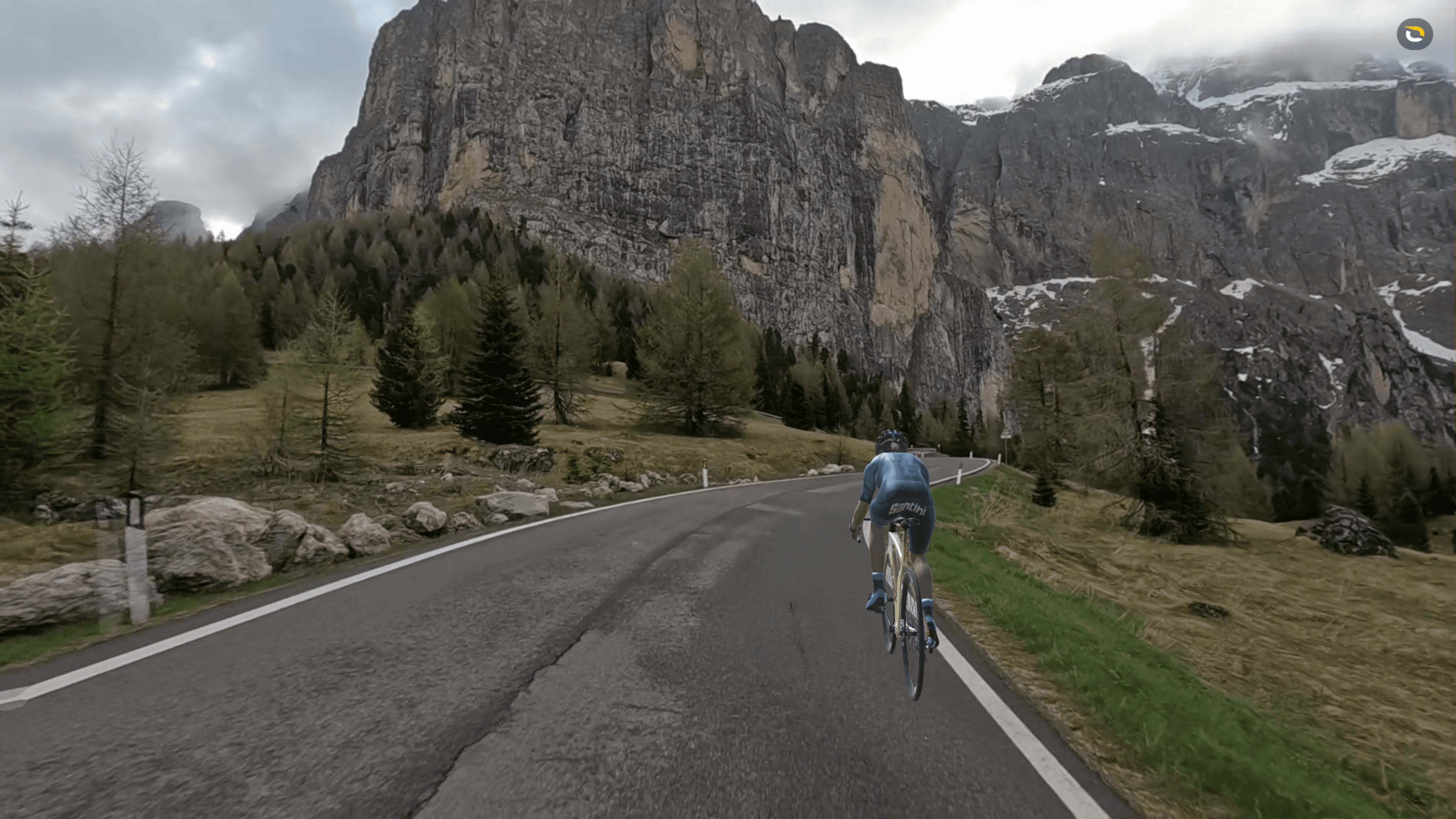
Pick one of the two dates a year, which is a traffic-free day to do it. All the Dolomites passes around the Sella Group are reserved for cyclists on these days only, allowing one to enjoy the Sella circuit without the exhaust fumes and the constant noise of vehicles. On these dates, all roads crossing the Dolomite Passes are closed to traffic.
If you'd prefer doing some gravel riding away from the asphalt, try the historic military trails, forest tracks, and alpine rifugios that lead you into this UNESCO World Heritage landscape. Events like Jeroboam Dolomiti offer highly scenic gravel challenges.
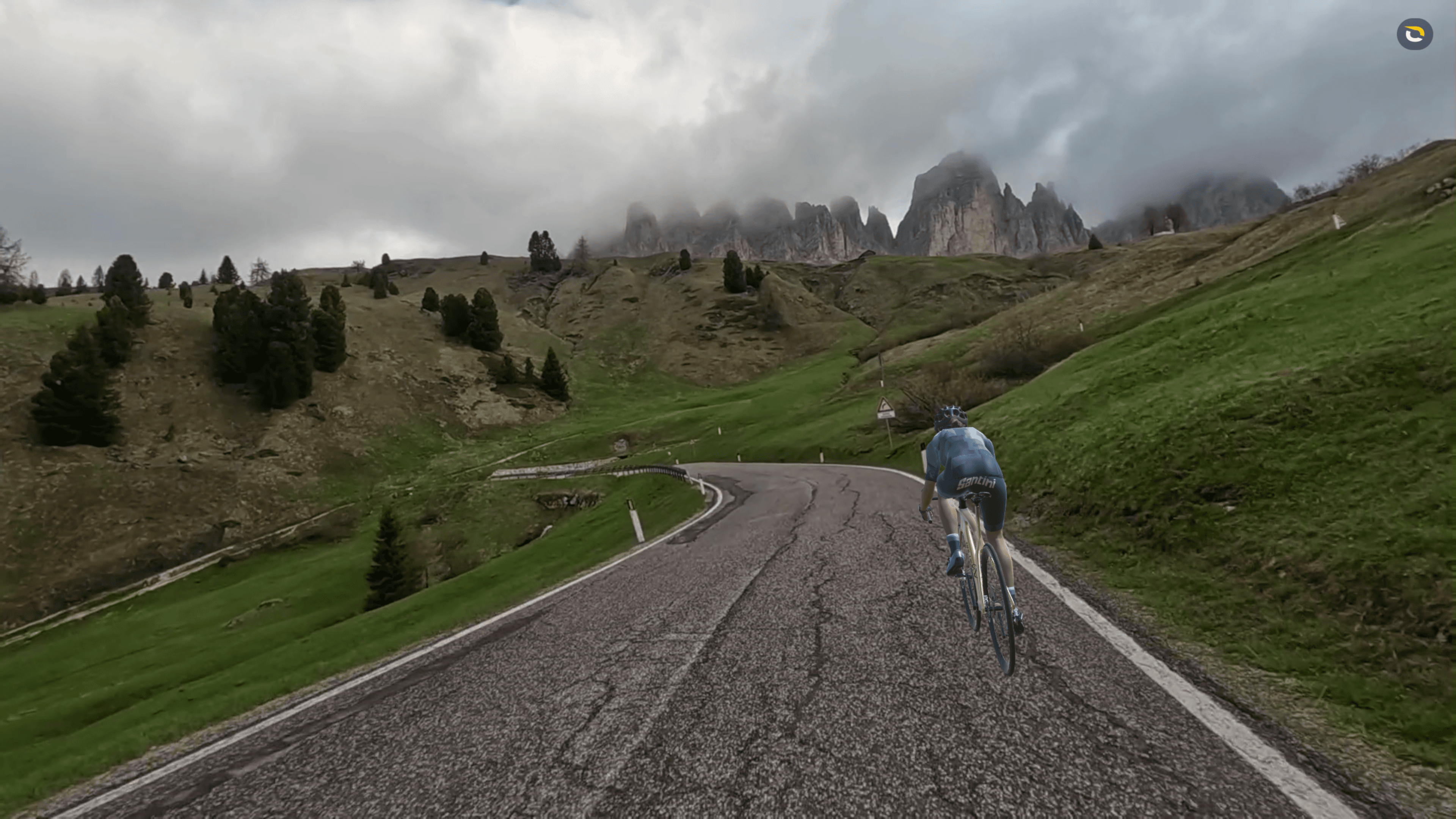
Ride Like a Pro: Haute Route & L’Étape du Tour
For cyclists dreaming of testing themselves on Tour de France-level climbs, two top rides and amateur events stand out: L’Étape du Tour and the Haute Route. L’étape lets thousands of riders experience a whole Tour de France stage on closed roads, often featuring iconic climbs like the Col du Galibier, Col de la Loze, or Alpe d'Huez, which can take over five hours to complete.
Meanwhile, the Haute Route is a multi-day, high-altitude race series that traverses mountain ranges such as the Alps and Pyrenees, featuring legendary ascents like the Col du Tourmalet, Col d'Izoard, and Mont Ventoux. These events combine stunning scenery with professional-level support, offering the ultimate challenge for serious amateur cyclists who want to check off multiple bucket list climbs in one go.
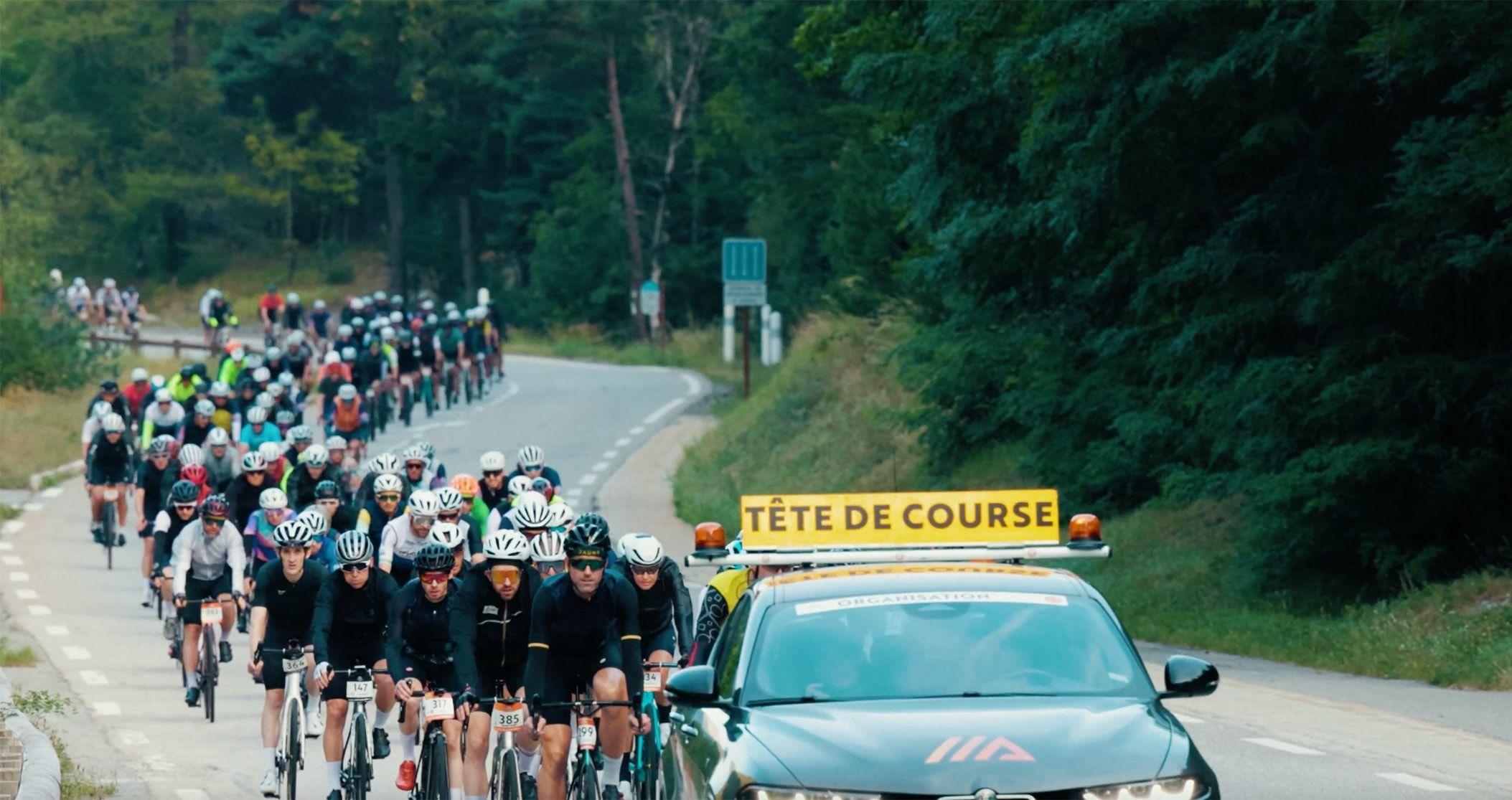
Iconic Events and Exciting Cycling Challenges Worldwide
Suppose the legendary climbs above kick-start your motivation and some ideas. In that case, there's even more to discover if you have a passion for exploring locations, ranging from South Africa to Iceland, with unique and new adventures to be had. Whether you're attracted to remote, rugged landscapes or the vibe of mass-participation events, these gravel adventures and world-class events should feature on your extended or specialised bucket list.
Cape Epic (Cape Town, South Africa)
For the avid cyclist seeking an incredible mountain biking challenge, this is the ultimate. The Cape Epic is a gruelling yet rewarding eight-day mountain biking stage race across South Africa's Western Cape, located near Cape Town and not far from the magnificent Cape Peninsula. Teams of two confront technical trails, jeep tracks, rugged climbs, and diverse terrain in unpredictable weather, establishing their status among the world's most demanding endurance cyclists.
I was fortunate enough to participate in the 8-day Cape Epic back in 2005. I can say it was the experience of a lifetime, and indeed the most challenging event I've ever undertaken, with 16,000m of climbing and around 900 km covered in a week. It was also a wonderful experience riding alongside cyclists from around the globe. If you have a deep passion for rugged mountain-bike stage races, this one's for you!
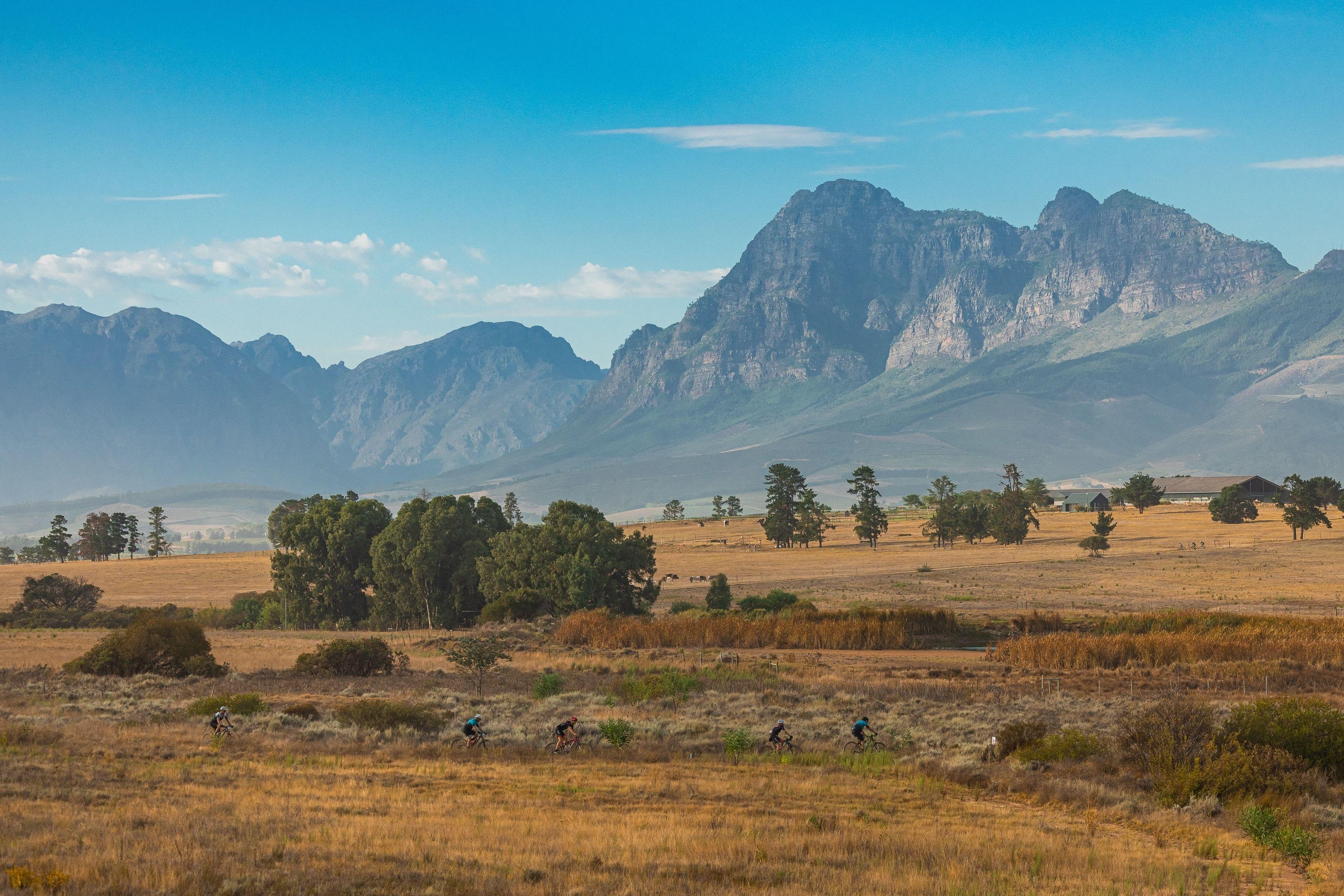
Iceland – Into the Elemental Wild on Two Wheels
Ride through a surreal, ever-shifting landscape of black lava fields, glacial rivers, steaming vents, and snow-capped peaks. Gravel routes like the F35 Kjölur cut straight through Iceland's remote highlands, where it's just you, the wind, and the wilderness—a cycling experience like no other. The best time to ride is summer, when long daylight hours and (slightly) milder weather open up access to this raw, untamed terrain. Whether you take it on in real life or virtually on ROUVY, Iceland offers one of the most elemental and unforgettable gravel challenges on Earth.
